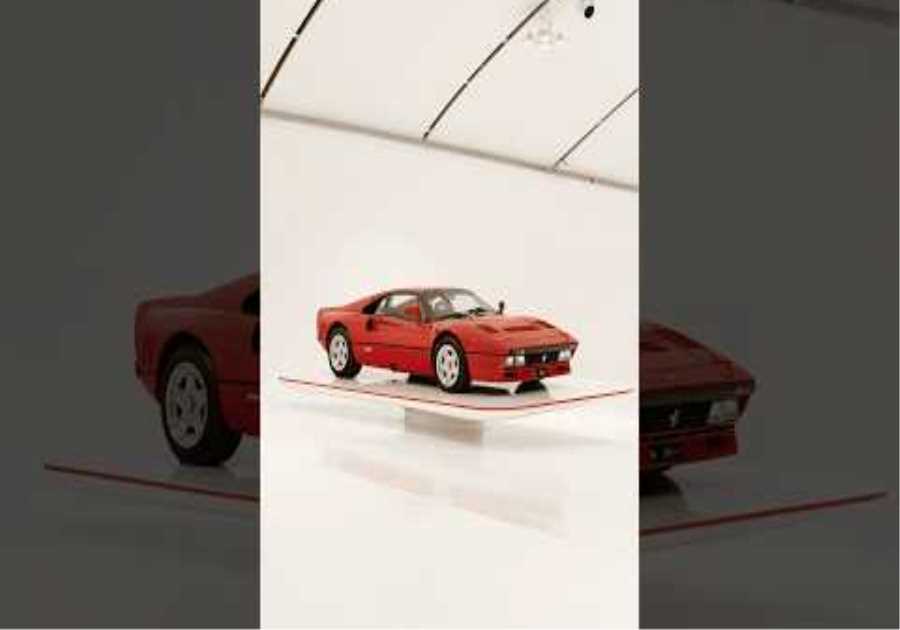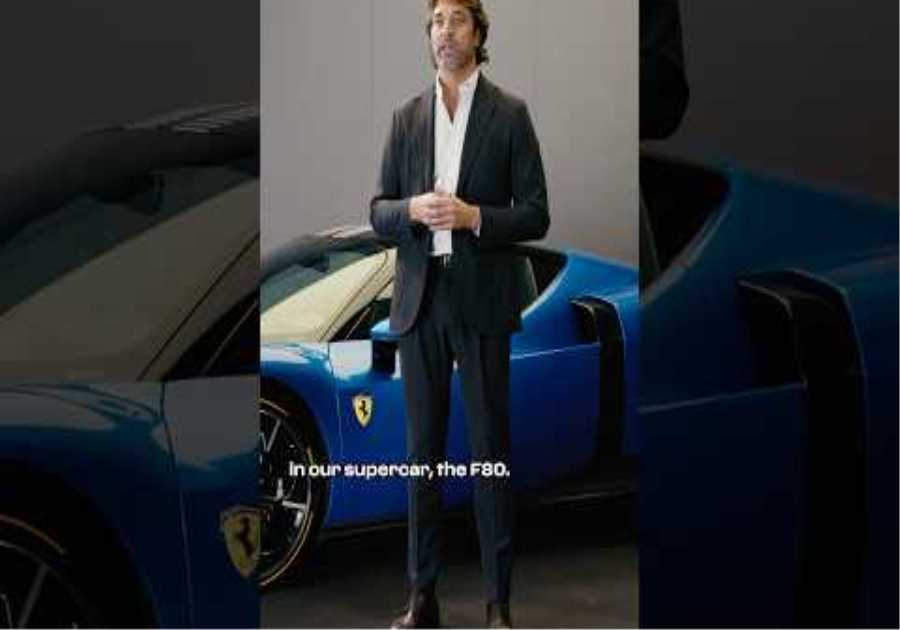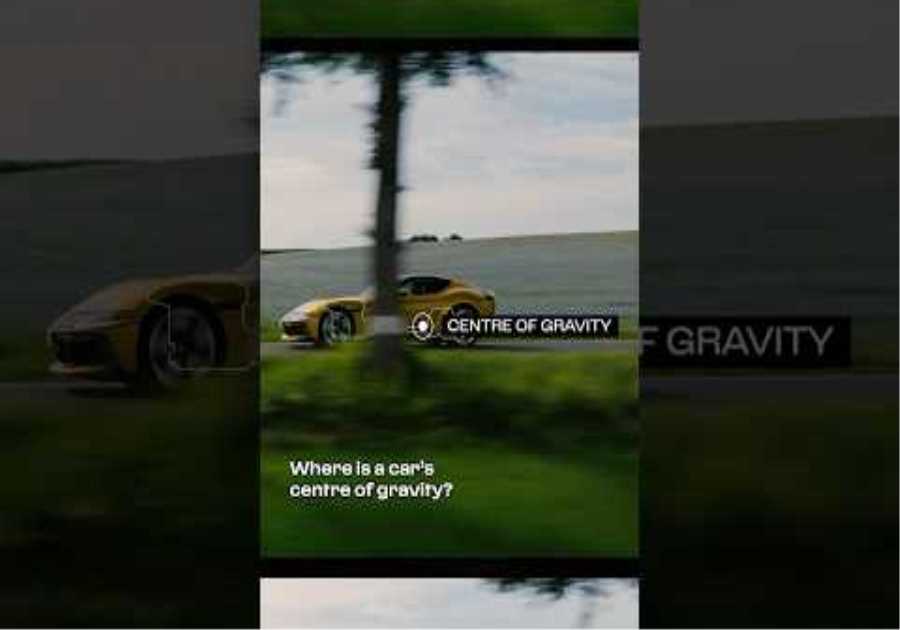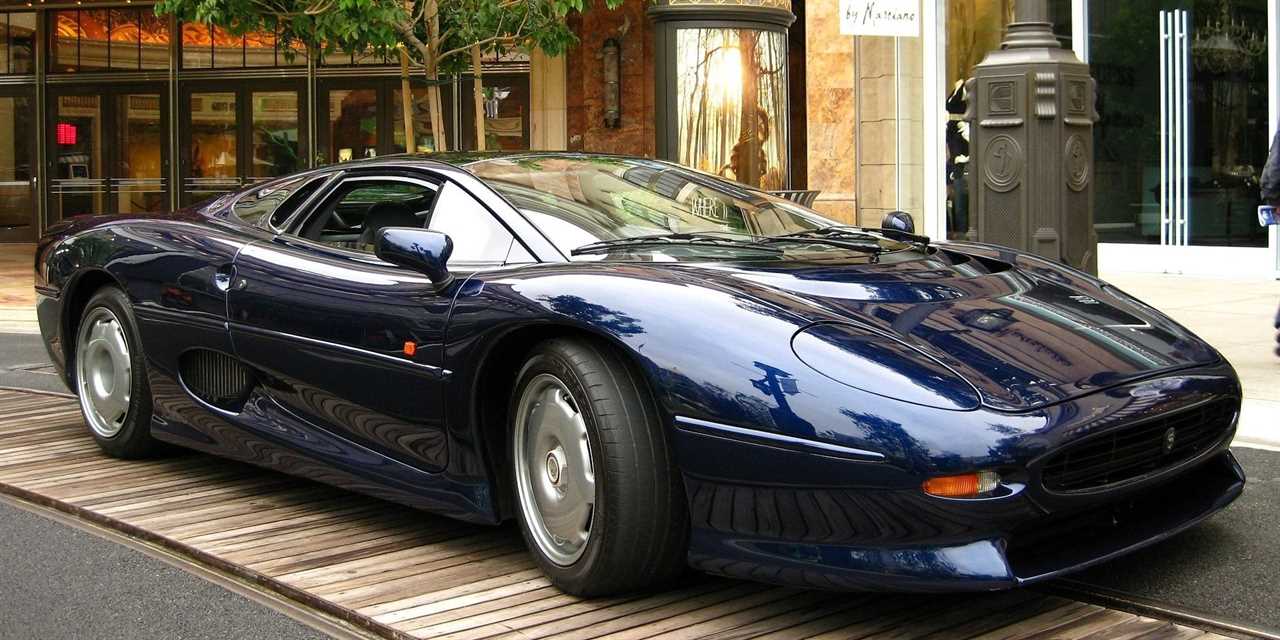
Looking back at the quickest cars of a decade can provide a new perspective on just how far the automotive industry has come in such a short period of time. High-performance cars often feature some of the greatest engineering achievements of the decade. When it comes down to determining the fastest car of the era, it largely boils down to acceleration.
Updated on April 2022: Many gearheads consider the ’90s to be the peak of automotive culture. New and exciting sports cars debuted every month, and the roads were graced with some of the coolest models in automotive history. To honor the ’90s and remind everyone how great this decade was, we’ve updated this list with more of the fastest cars from the period and contrasted them with some of the very slowest.
The 1990s is a decade that many look upon with nostalgia as they cite childhood toys and a romanticized view of better times. For cars, it’s very much the same, with high-performance cars running rampant and setting new milestones. From American muscle to straightforward supercars, there’s plenty to love from the ‘90s.
Shifting gears and experiencing exhilarating thrills both on and off the track were, and still are, a favorite pastime of performance enthusiasts. The ‘90s left their mark on the automotive industry in a way few other decades can match.
There are many ways to determine which cars are the fastest of any decade. Generally, top speed and 0-to-60 mph times are two factors that coincide with performance capabilities. As such, we’ll be using the latter to look at 10 of the fastest cars of the ’90s.
23 Fastest: 1991 Ford Taurus SHO
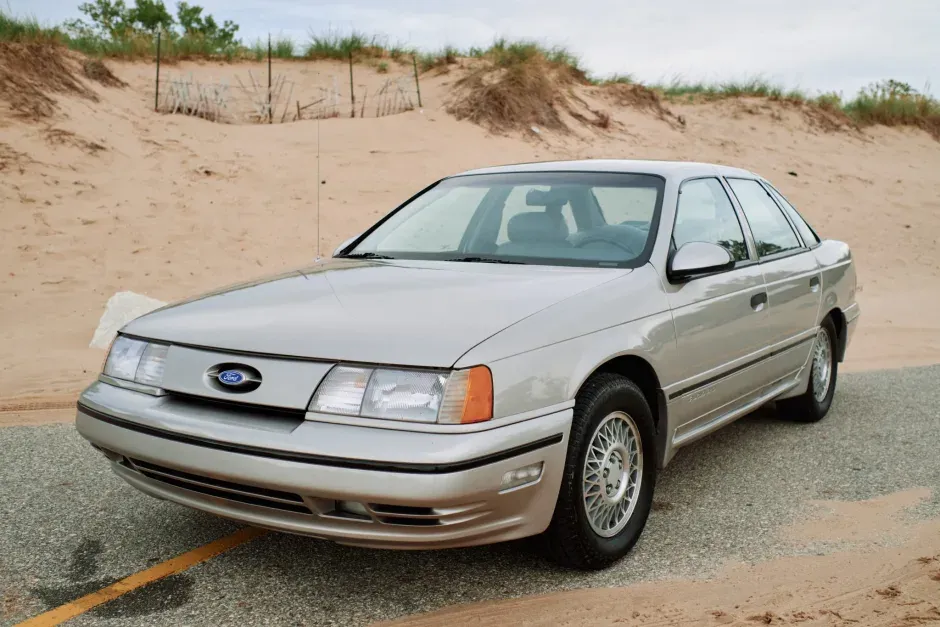
So, we’re going to kick this list off with one of the most famous sleepers in history, the first-generation Ford Taurus SHO. Ford built the SHO from the year 1989, and they continued to produce this unassuming performance monster till 2019. No, the first-generation SHO sounded somewhat bland on paper: front-wheel-drive, four-door sedan, but then something extraordinary happened – Yamaha. Yamaha joined forces with Ford and engineered a 3.0-liter V6 engine with a redline of 7,000 RPM and a total power output of 220 hp, with that came a Mazda-derived 5-speed stickshift, and the result was beyond belief. 0-60 happened in 6 and a half seconds, and it had a top speed of near-150 mph. Since the 1991 Taurus SHO only cost around $20,000, it was a bargain 4-door sports car.
22 Fastest: 1995 Ford Mustang SVT Cobra R
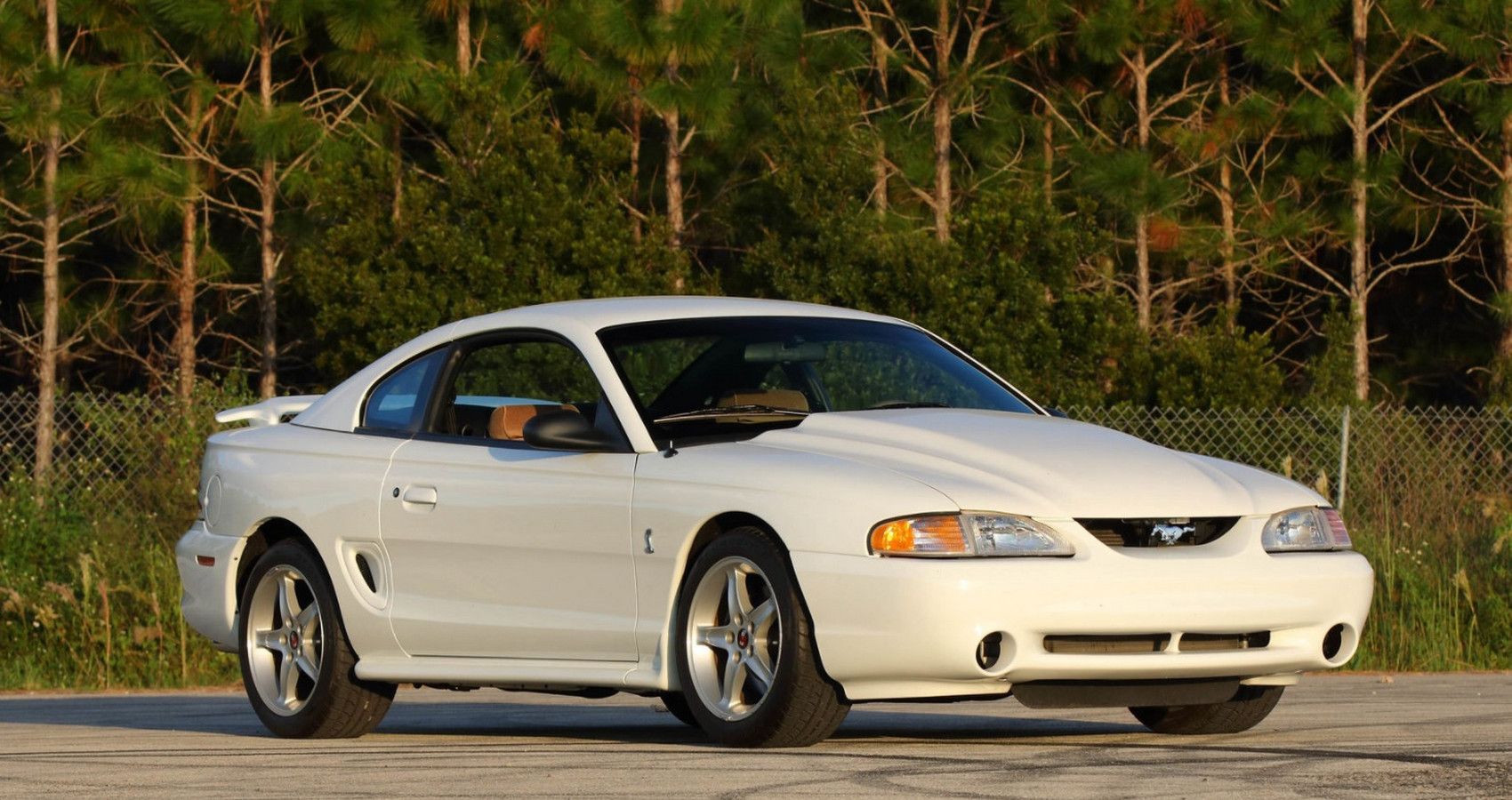
No “top 10 fastest cars” list of any recent decade is complete without some American muscle. The 1995 Ford Mustang SVT Cobra R features the iconic fox body style that made it a hit among drivers of all ages. Weighing in at 3,326 lbs., the Mustang SVT Cobra R promised to deliver thrills all year long.
This American pony car boasted a 5.8-liter V8 engine with port fuel injection. It came mated to a five-speed manual transmission and, like most sports cars, rear-wheel drive. At the end of the day, this speed demon generated an impressive 300 hp and 365 lb-ft of torque without missing a beat.
To get one of the 250 R-models, drivers needed to contact the Ford Special Vehicle Team. Although drivers needed a racing license and an intention to race the model, the R-models sold out in just five days! Remember, this was before the internet was a mainstream method of buying and selling anything, let alone cars.
Even with all that power, this muscle car took 5.4 seconds to run from 0 to 60 mph. Featuring a top speed of 151 mph and a quarter-mile time of just 14 seconds, it’s no wonder the Mustang SVT Cobra R tore past competitors to leave its mark in the 1990s.
21 Fastest: 1990 Chevrolet Corvette ZR-1
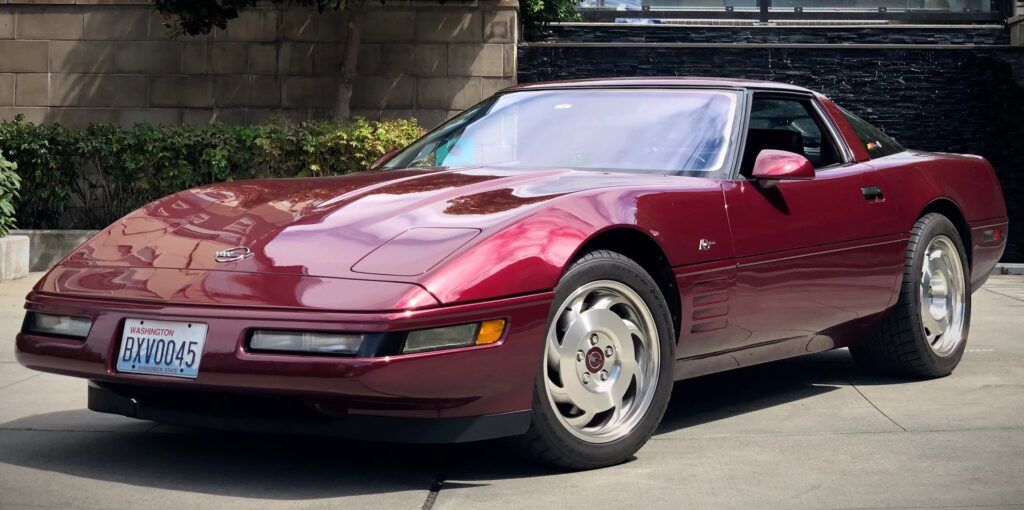
The Chevrolet Corvette remains a world-class sports car that can put competitors to shame with relative ease. The sleek model has a history of doing so, especially when the 1990 Chevrolet Corvette ZR-1 enters the race. Designed to raise the appeal of American sports cars in the European market, the Corvette ZR-1 was a monster on the track.
Also known as “King of the Hill” and “Super Vette,” the 1990 Corvette ZR-1 was one of the least expensive supercars available at the time and is still affordable on the used market today. While it may have been more affordable, the sports car also offered nimble handling and high-end braking that put it on par with much more expensive competitors. Those factors, combined with its insane performance, set it apart from other American sports cars.
Drivers who valued performance surely enjoyed pushing the 5.8-liter V8 engine to its limit. A smooth six-speed manual and an impressive 405 hp and 385 lb-ft of torque powered this American sports car from 0 to 60 mph in just 4.9 seconds. Thanks to its aerodynamic design and powerful engine, the Corvette ZR-1 could tear through a quarter-mile in just 13.1 seconds. On top of that, its top speed sat at a heart-pumping 180 mph. How’s that sound, 1990s Europe?
20 Fastest: 1993 Toyota Supra
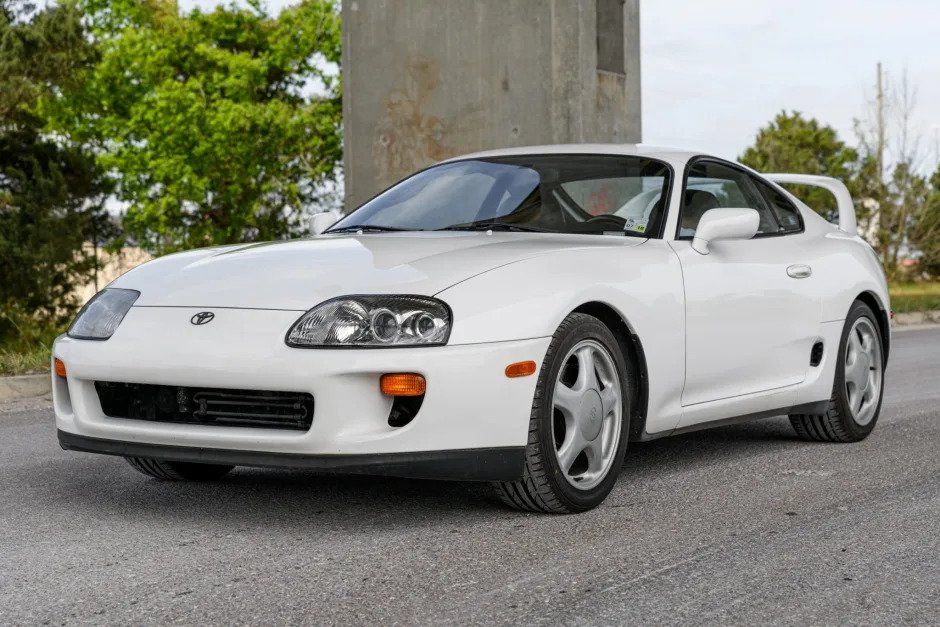
Toyota isn’t exactly the automotive manufacturer that comes to mind when one thinks about the fastest cars of the 1990s. Even so, the Japanese automaker certainly made its presence known with the 1993 Toyota Supra Turbo. The launch of the fourth generation spurred a higher level of performance, thanks to a more powerful engine and a new aerodynamic design. An optional rear wing became one of the most iconic parts of the new model’s design. Combined with the rounded 1990s style, the wing made the sports car stand out from the crowd like a sore thumb, but in a good way.
A 3.0-liter twin-turbocharged inline six-cylinder engine rested under the hood of this Japanese sports car. Paired with a six-speed manual transmission and rear-wheel drive, the Supra Turbo churned out a massive 320 hp and 315 lb-ft of torque. All that power resulted in a 0-to-60 mph time of just 4.6 seconds.
The launch of the fourth generation saw the Supra’s weight decrease by at least 200 lbs. Weighing in at 3,417 lbs, the Supra Turbo offered nimble handling paired with high-end performance. The model was so powerful that the top speed, 155 mph, was electronically limited. This iconic sports car even ran a quarter-mile in just 13.1 seconds!
After the MK4 Supra, Toyota did not make any high-performance models for quite some time but eventually revived the model plaque in the late 2010s.
19 Fastest: 1991 GMC Syclone
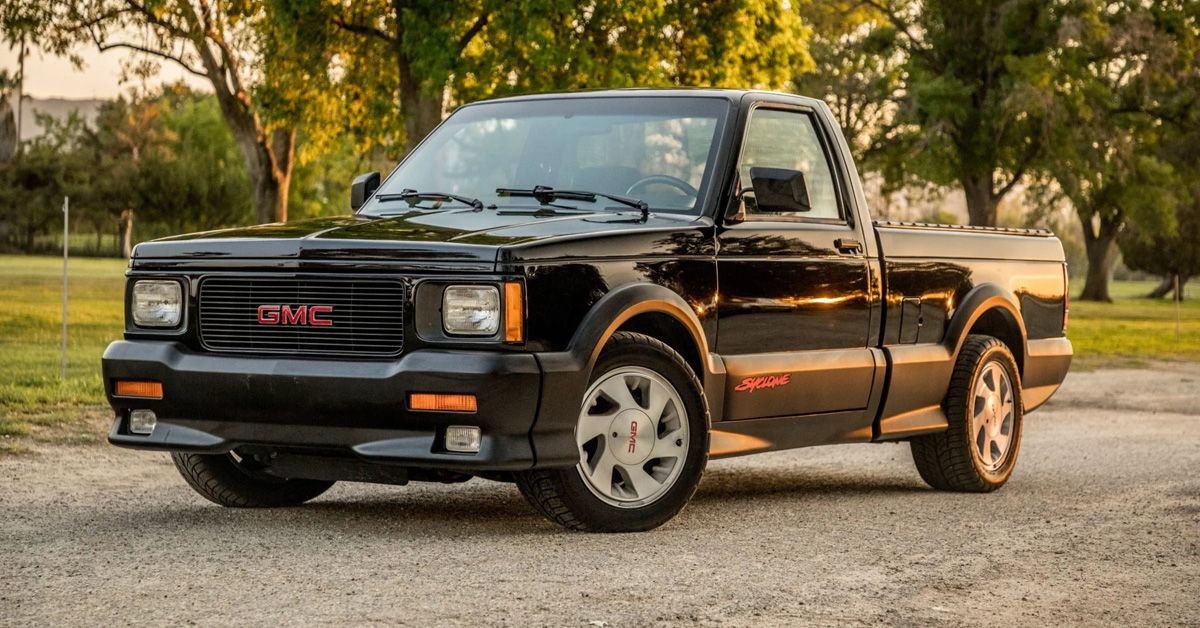
It’s rather obscure to start this list with some of the fastest cars from the ’90s with a boxy pick-up truck, but the GMC Syclone wasn’t just any ordinary downsized truck. The Syclone was only produced for one year (excluding the 3 limited-edit models from 1992), and each one came equipped with a frightening 4.3-liter turbocharged V6, rear-biased all-wheel-drive, disc brakes, and a curb weight of 3,600 lbs. Its motor spat out 280 hp and 350 lb-ft of torque, and once those power figures were conducted through its 4-speed auto box, reaching 60 mph from a standstill happened in as little as 4.3 seconds, and it completed the quarter-mile run in 13.4 seconds. Talk about a wolf in sheep’s clothing.
18 Fastest: 1990 Lamborghini Diablo
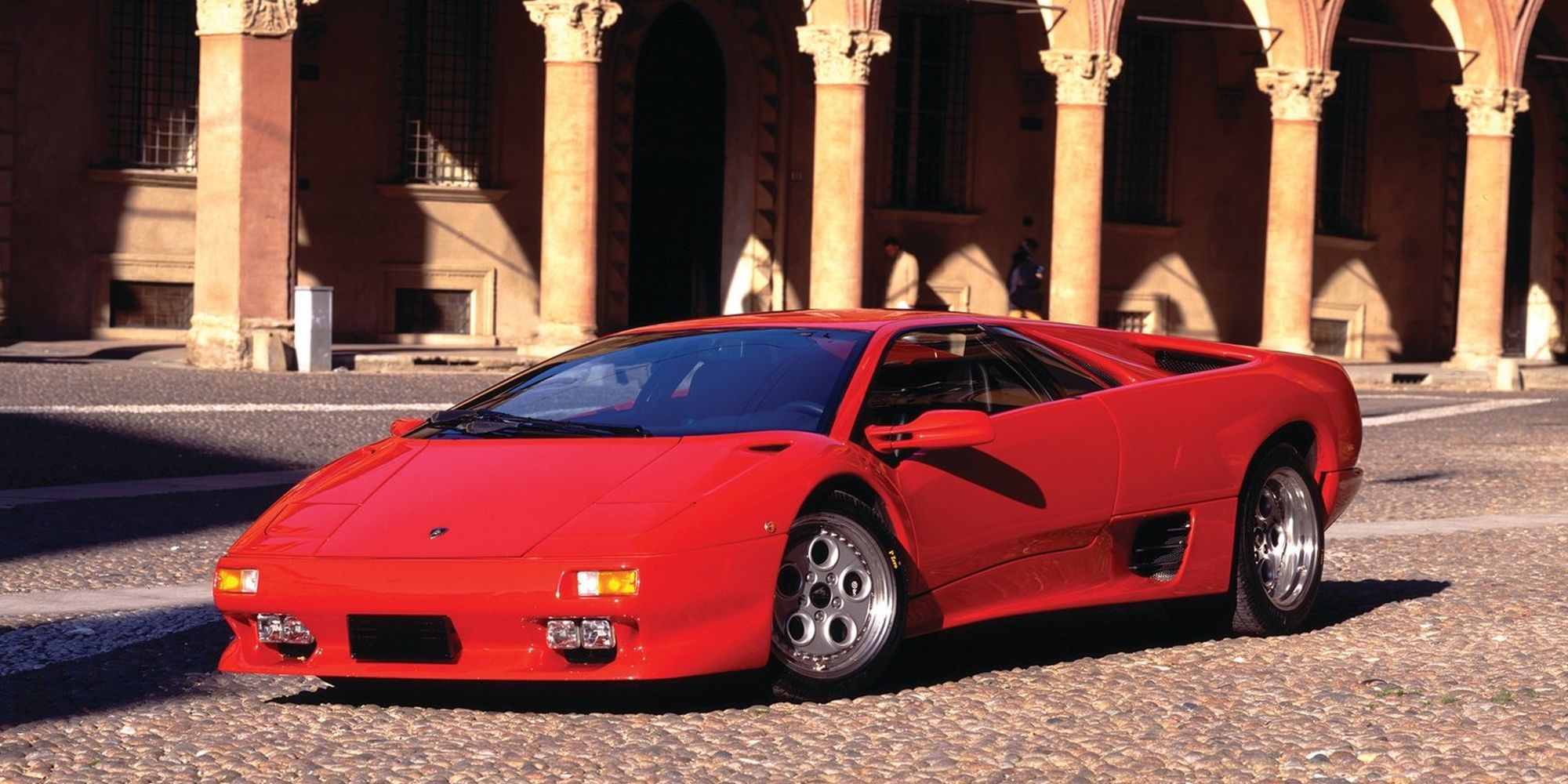
Supercars have long been the top dogs when it comes to the fastest cars of many decades, and the 1990s are no exception. The 1990 Lamborghini Diablo blew into the decade with a blazing performance that makes it a tried-and-true supercar. Better yet, just 2,900 examples rolled off the production line before the Lamborghini Diablo was discontinued in 2001.
Although it may not have been as affordable as muscle cars, the Diablo was certainly a sight to behold. Its crisp design and eye-catching corners made it a hard model to miss. Of course, the roar of the engine was also a way to catch the attention of anyone nearby.
The Lamborghini Diablo comes locked and loaded with a 6.0-liter V12 – yes, 12 cylinders – engine mated to a five-speed manual transmission. That powertrain generated a thrilling 492 hp and 427 lb-ft of torque with ease. That kind of power leads to intimidating acceleration. With a 0-to-60 mph time of just four seconds flat, this supercar left its mark on the world. Boasting a top speed of 204 mph, the Diablo was practically born on the track. And with a starting price of $239,000 and a limited production run, it’s no wonder the Lamborghini of the 1990s remains a legend today.
17 Fastest: 1994 Porsche 911 Turbo
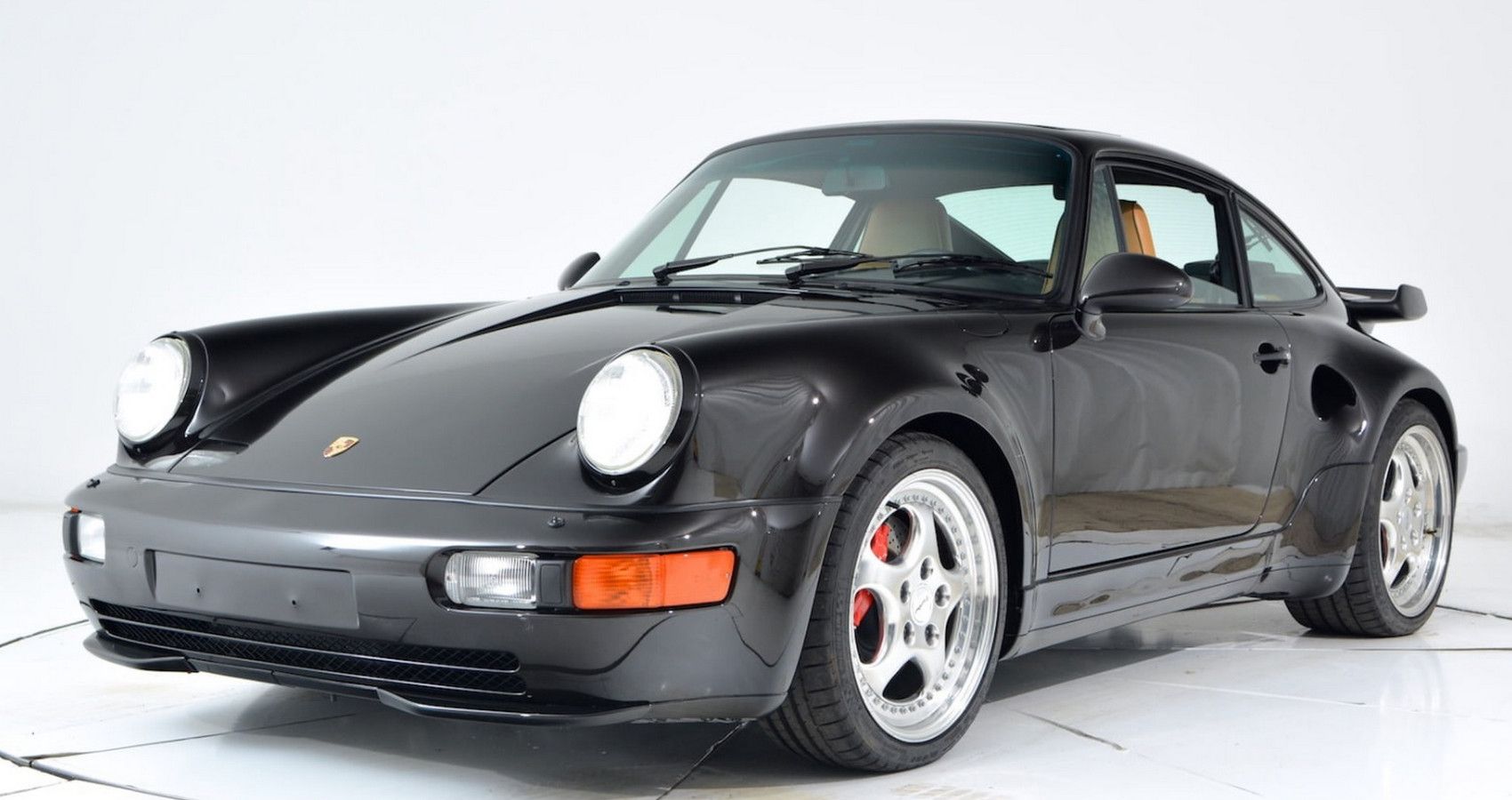
The 1994 Porsche 911 Turbo was unveiled as the highest-performance production car ever to make its way to the United States. The rear-engine model started at six figures, as one would expect, and featured a wheelbase of just 89.4 inches. Needless to say, the Porsche 911 Turbo caught eyes and ears with minimal effort.
In order to fix unpredictable driving patterns that had plagued the Porsche 911 Turbos of the past, the manufacturer implemented low-end torque. Torque increases steadily, essentially creating a predictable and more controllable driving pattern. A hard launch left drivers pinned to the seat as this sports car unleashed all of its rage onto the road.
This small coupe featured a rear-engine design that worked flawlessly with the rear-wheel-drive configuration. A 3.6-liter turbocharged flat-six-cylinder engine came mated to a five-speed manual transmission. All in all, that powertrain produced a hearty 355 hp and 384 lb-ft of torque.
It should come as no surprise that the Porsche 911 Turbo ran a 0-to-60 mph time of just four seconds, tying with the Lamborghini Diablo; boasting a top speed of 174 mph and a quarter-mile time of 12.4 seconds, this sports car set a new standard for performance.
16 Fastest: 1997 Dodge Viper GTS
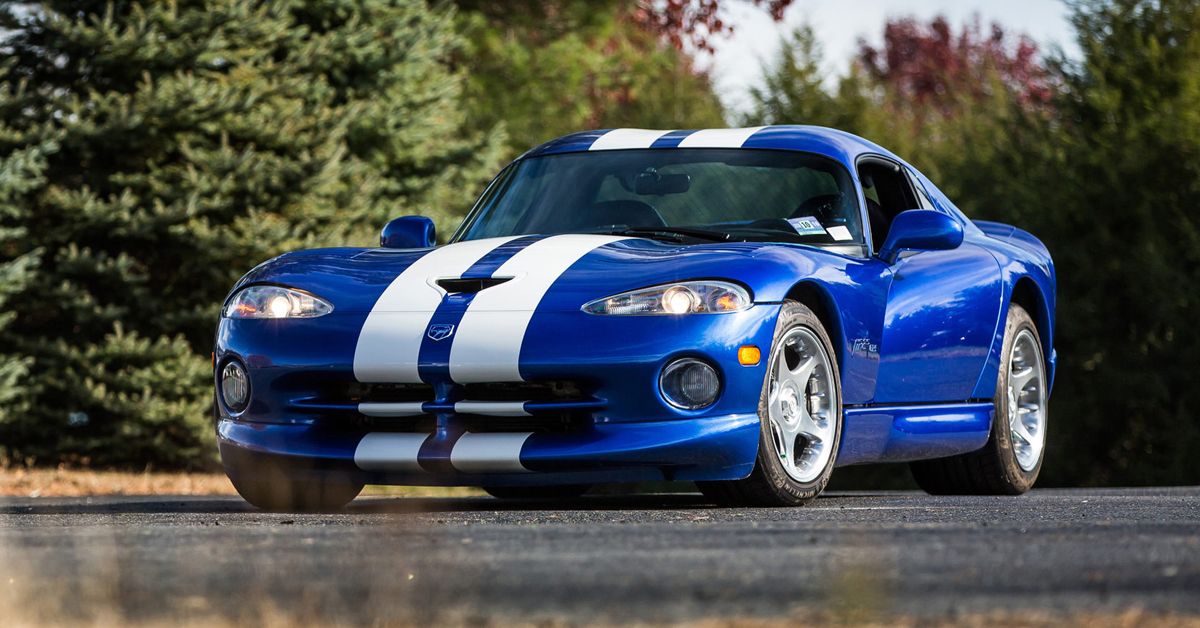
It just wouldn’t be a “fastest cars of the 1990s” list without an appearance by the infamous Dodge Viper. The 1997 Dodge Viper GTS arrived with a massive engine that delivered insane performance that landed it on Top 10 lists of all kinds. Weighing in at 3,375 lbs, the Viper GTS was as swift as it was powerful.
The Dodge Viper GTS earns its spot as one of the fastest cars of the 1990s with a 0-to-60 mph time of just four seconds. That time puts it on par with the previous two entries on this list.
The 1997 Viper GTS featured an 8.0-liter V10 engine paired with a six-speed manual transmission and rear-wheel drive. That powertrain delivered an inspiring 450 hp and 490 lb-ft of torque and a top speed of 180 mph. Add that to the 12.2-second quarter-mile run, and it’s hard not to want to get behind the wheel of the Viper GTS.
The 1997 Viper GTS topped all its competitors in the quarter-mile run and passed the one-mile mark at nearly 170 mph. That kind of performance is nearing that of six-figure supercars. Oh, and the 1997 Dodge Viper GTS started at just over $73,000, making it a true value among performance enthusiasts.
15 Fastest: 1996 Mosler Raptor
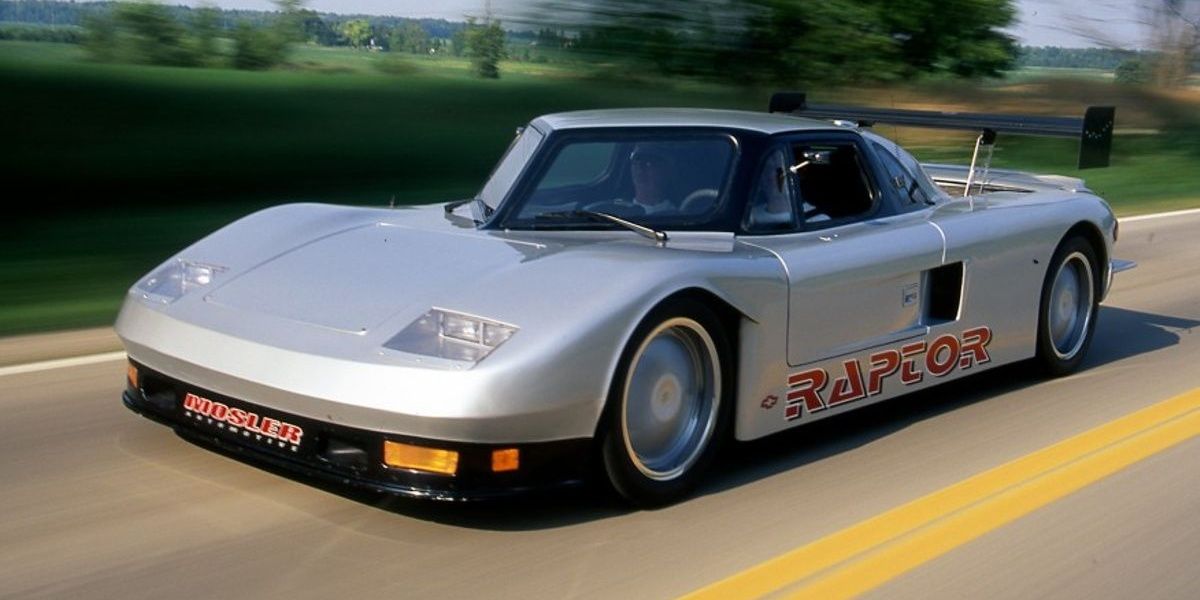
Mosler wasn’t the most well-known automotive manufacturer, and they won’t be around in the foreseeable future. Mosler Automotive was an American automotive manufacturer that opened its doors in 1985. The company closed for good in 2013. Fortunately, before it became defunct, this American performance manufacturer gave us the 1996 Mosler Raptor.
Weighing in at just 2,773 lbs., the Mosler Raptor featured a middle-engine layout. The 6.3-liter V8 engine boasted an impressive 440 hp and 429 lb-ft of torque, and its rear-wheel-drive and a five-speed manual offered smooth performance. Those specifications might not make it sound any different from the models we’ve already looked at, except for one detail: the Raptor weighs in at nearly 600 lbs: Less than its comparable competitors, like the 1997 Viper GTS.
Combined with an aerodynamic design, that engine and that massive weight difference allow this supercar to gain the upper hand. The 1996 model ran from 0-to-60 mph in 3.9 seconds, a tenth of a second faster than the previous three entries.
Obviously, a tenth of a second isn’t much in the grand scheme of things, but it was enough to land the 1996 Mosler Raptor a spot towards the top of this list. According to fastestlaps.com, the supercar also ran a quarter-mile in 12.3 seconds and featured a top speed of 163 mph. It’s no Italian stallion, but it certainly earns America a few points in performance. Speaking of Italian stallions.
14 Fastest: 1997 Ferrari F50
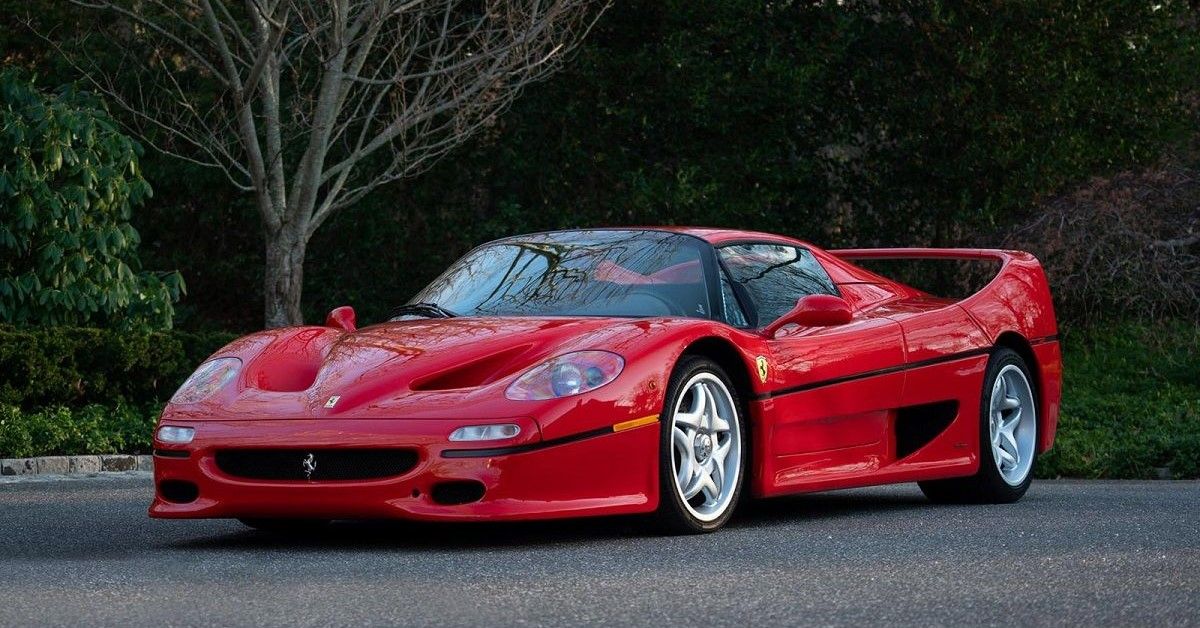
Everyone knew it was only a matter of time before Ferrari made its presence on this list known. The 1997 Ferrari F50 was the final model in its lifespan before it was succeeded by the Ferrari Enzo. With just 349 examples produced, this supercar is the envy of every speed-loving enthusiast.
Weighing in at 2,976 lbs., the Ferrari F50 combined an aerodynamic design and an eager powertrain to burn rubber. A mid-mounted engine and rear-wheel drive pushed this supercar to become better than the competition. In order to drop weight, Ferrari employed a carbon-fiber monocoque chassis and double-wishbone suspension for improved handling and ride. Brembo discs were used to bring the car to a halt, albeit much to the displeasure of the horses under the hood.
The 4.7-liter V12 engine saw a twin-plate clutch and a six-speed manual transmission delivering its high-power performance to the road. That powertrain ultimately produced 512 hp and 347 lb-ft of torque. Although those specifications alone might not land it high on any performance lists, the Italian supercar’s performance spoke volumes. The 1997 Ferrari F50 tore down a track and hit 60 mph in just 3.87 seconds alongside a top speed of 202 mph, it’s no wonder this model is a fan favorite.
13 Fastest: 1992 Jaguar XJ220
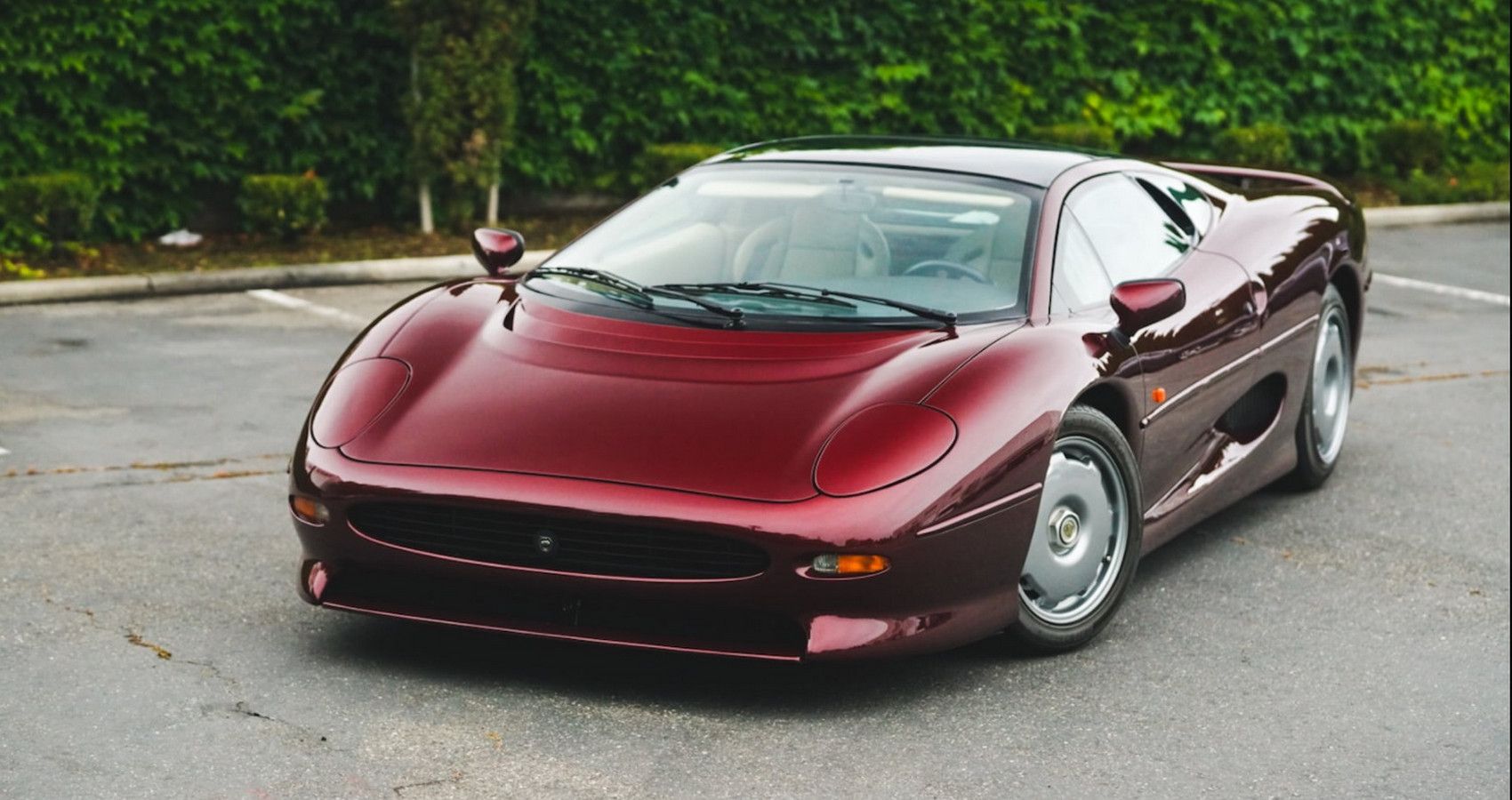
Jaguar isn’t a manufacturer known for creating performance models that can make Top 10 lists, but the 1990s were a different time. The 1992 Jaguar XJ220 ruled the roads with startlingly quick acceleration and a classic style fit for the decade. From rounded corners to high speeds, this coupe had it all.
The Jaguar XJ220 featured a 3.5-liter twin-turbocharged V6 engine paired with a five-speed manual transmission and rear-wheel drive. Ultimately, that powertrain delivered a blazing 542 hp and 475 lb-ft of torque. Even when equipped with two catalytic converters, which reduce the engine’s overall output, the Jaguar XJ220 still ran from 0 to 60 mph in just 3.6 seconds.
The XJ220 was a model designed to beat Italian supercar manufacturers like Ferrari. By the time the production version was ready for the road, it would achieve over 200 mph, but it wasn’t enough.
The story of this Jaguar is a sad one. The original concept car featured a V12 engine and caught the eye of high-performance enthusiasts. Although the production engine still tapped 200 mph, it wasn’t quite the same in the eyes of the consumer. As a result, buyers recalled their deposits and sales slowed, resulting in the discontinuation of the model after just two years of production.
12 Fastest: 1994 McLaren F1
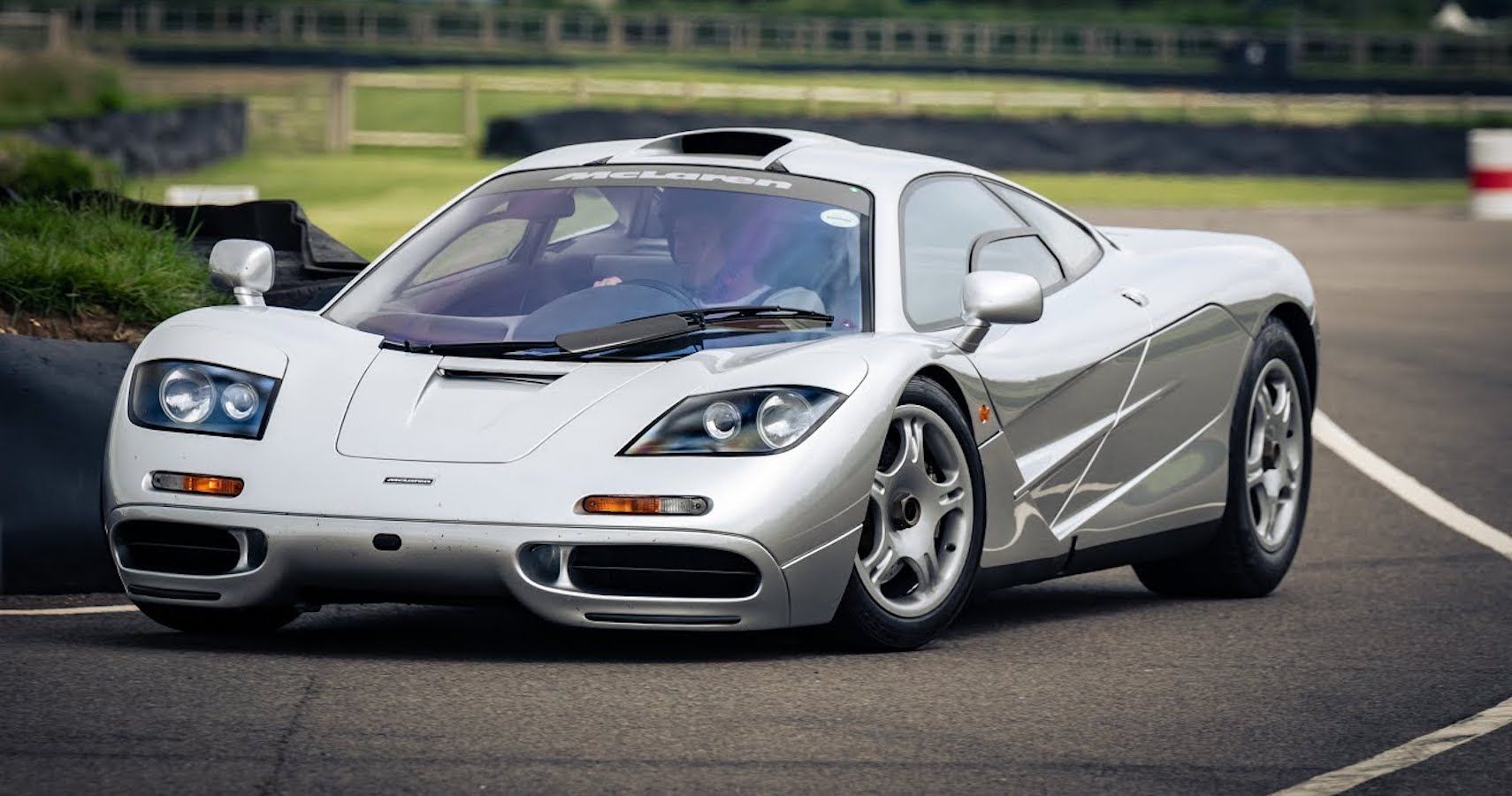
When it boils down to acceleration and top speed, there’s no 1990s supercar that can compete with the 1994 McLaren F1. Weighing in at less than 2,500 lbs, this model delivered performance that put it well ahead of competitors like the XJ220 and F50. In fact, it’s a fairly decisive win once all is said and done.
The McLaren F1 boasted a 6.0-liter V12 engine mated to a six-speed manual transmission and rear-wheel drive, just like most other models on this “top 10 fastest cars” list. Overall, that powertrain produced 627 hp and 500 lb-ft of torque which made it an absolute monster on the track.
That kind of performance resulted in a 0-to-60 mph time of just 3.2 seconds, putting it nearly half a second ahead of its closest competitor. Better yet, this supercar achieved a 100 mph time of 6.3 seconds and a quarter-mile run of 11.1 seconds. It also had a top speed of more than 240 mph.
According to Road and Track, the F1 was rather unique in that it featured a central driving position. The cockpit fell in line with the pedals and the steering wheel, making it a simple matter to steer accurately. Two passenger seats sat at the rear of the central driver’s seat. Needless to say, the 1994 McLaren F1 remained a dominant model throughout the second half of the decade, even with its rather unique interior design.
As with all decades, you have to take the good with the bad, and the 1990s are no exception. This nostalgic decade wasn’t entirely composed of high-performance heartbreakers designed for the track. No, there are a number of cars that made their way to the road with impressively bad acceleration and top speeds. Thus, we’ve dubbed these the 10 slowest cars of the ’90s.
11 Slowest: 1997 Ford Ka
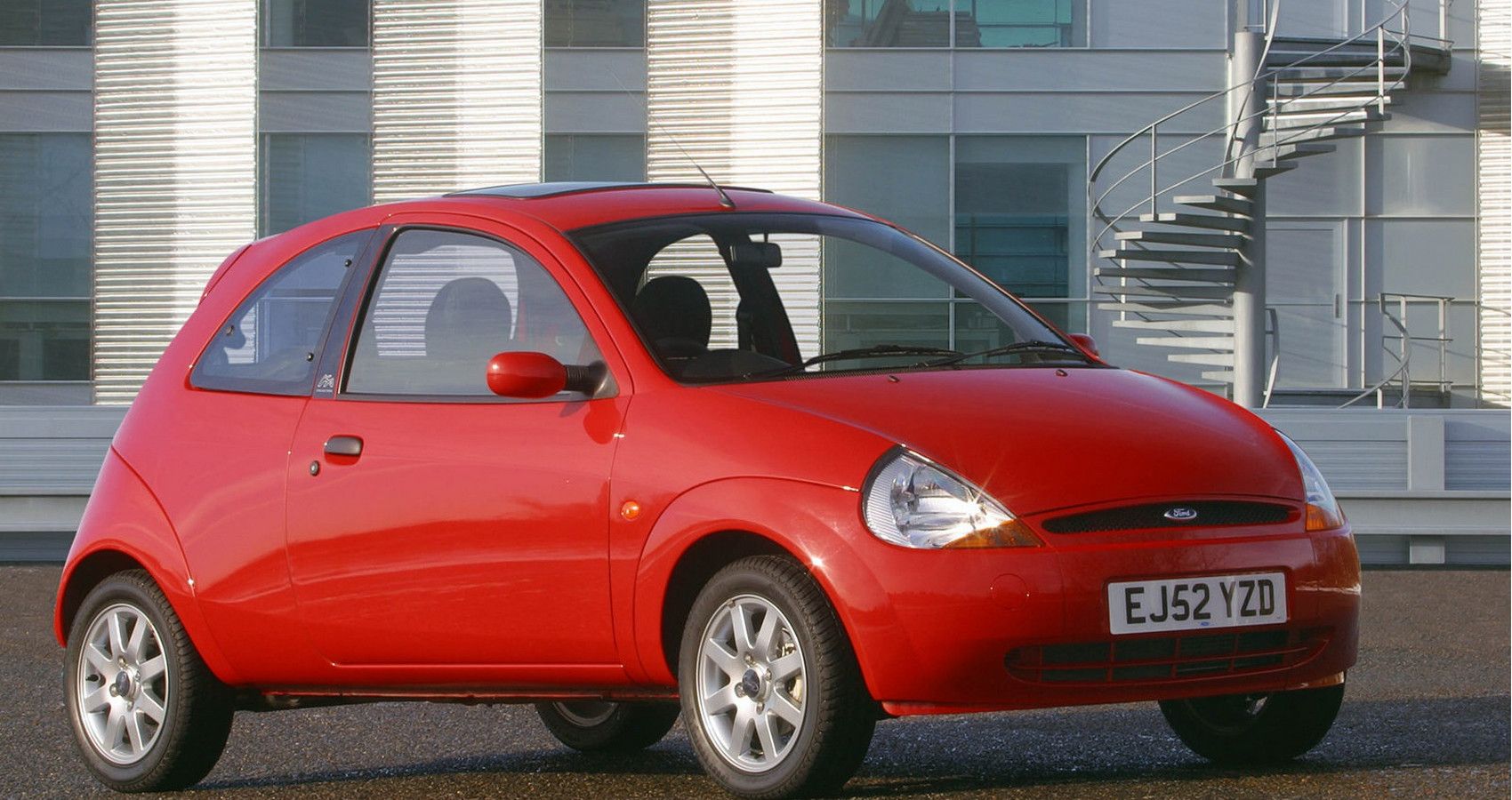
Ford saw to it that plenty of performance models made their way to the road in the 1990s, unfortunately, the 1997 Ford Ka wasn’t one of them. Only available in Europe, the Ford Ka was a compact hatchback that was surprisingly slow, especially compared to its competitors.
The three-door hatchback weighed in at 1,920 lbs with a wheelbase that stretched just 96.4 inches. It came powered by a 1.3-liter four-cylinder engine paired with a five-speed manual transmission and front-wheel drive. With an output of 59 hp and 77 lb-ft of torque, it’s easy to see where Ford went wrong in this model.
That combination of weight, engine, and total output resulted in a sluggish 16.7-second 0-to-60 mph run, although it can hardly be considered a run. The hatchback struggled all the way. Even worse, the 1997 Ka ran a quarter-mile in 20.8 seconds, putting it well behind almost every other car in the industry.
We would’ve included a 0-to-100 mph time, too, but according to car-data.com, the Ford Ka maxed out at around 91 mph. Needless to say, this is one car that no performance enthusiast is looking back on with nostalgia. On the bright side, at least it was cheap.
10 Slowest: 1998 Honda EV Plus
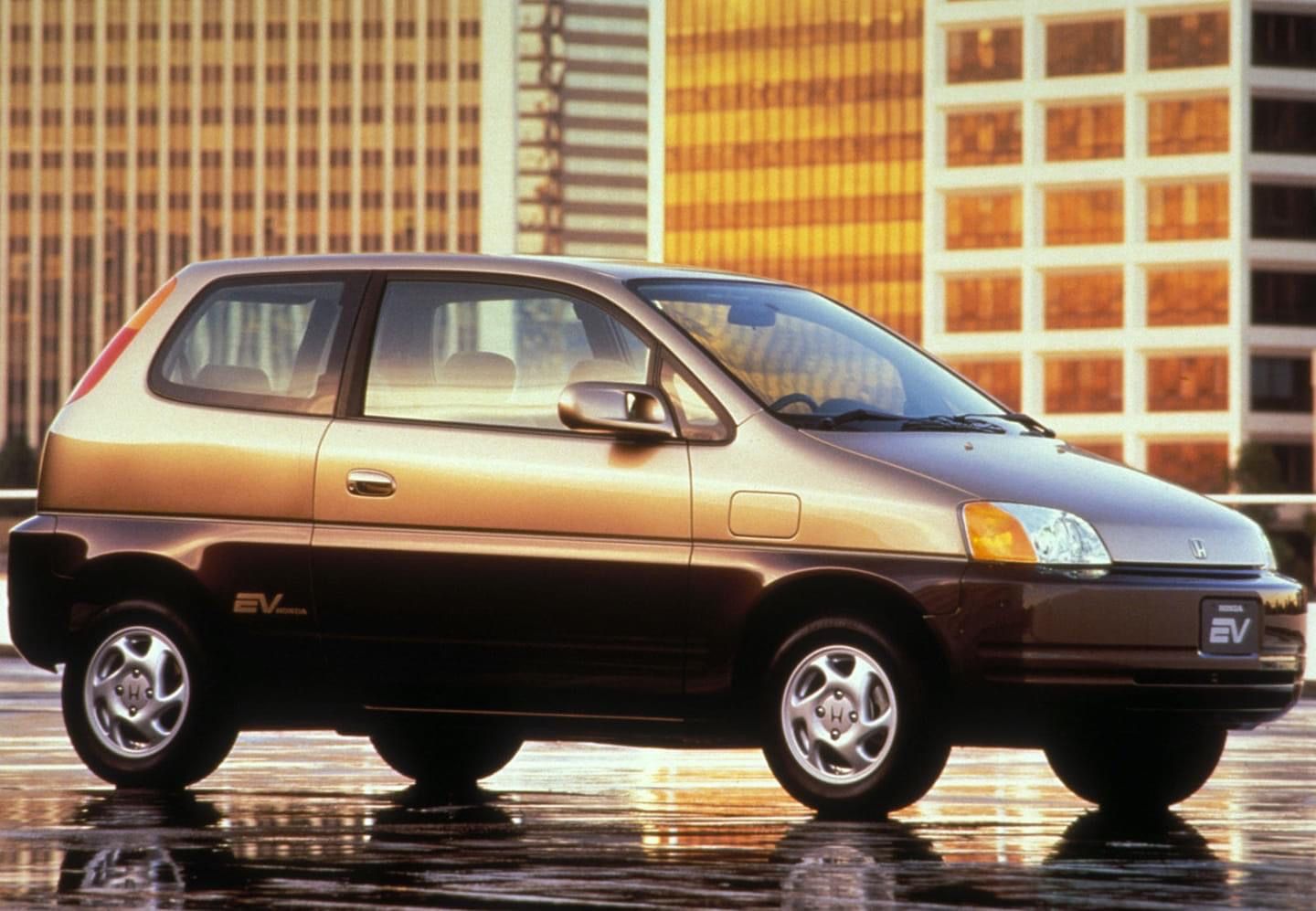
As far as electric cars go, Honda was ahead of its time in the 1990s. The 1998 Honda EV Plus made its way to the North American and Japanese markets. Although it didn’t see an insane amount of success (or performance), it certainly spurred on early electrification in the automotive industry.
Since the Honda EV Plus featured an early electric powertrain, we’re willing to cut it some slack. That powertrain came paired with a single-speed transmission and front-wheel drive. It came in hot with a 0-to-60 mph time of 16.5 seconds, making it one of the slower models of the decade.
Contributing to the sluggish behavior of the electric three-door hatchback was a hefty 3,589 lb curb weight and a 99.6-inch wheelbase. Even with its massive gut, the EV Plus produced 66 hp, 203 lb-ft of torque, and obtained a quarter-mile time of 20.3 seconds.
As for what this model did right, according to tzev.com, the EV Plus featured an 81-mile driving range, which tops some modern electric vehicles. Although the 1998 Honda EV Plus didn’t break any speed records, it was certainly an interesting model at the time. Unfortunately, its lifespan ended after the 1999 model year.
9 Slowest: 1994 Ford Aspire

It’s a little unfortunate that an automaker known for its American muscle lands on the 10 slowest vehicles of the 1990s twice. That’s the case here, as the 1994 Ford Aspire arrived with a compact design paired with disappointing performance. Although it was a little quicker than the European Ka, the Ford Aspire is still no racehorse. The Aspire was available as a two-door and a four-door hatchback. The former is the quicker of the two with a 0-to-60 mph time of 14.3 seconds and a top speed of 98 mph, however, it isn’t possible to grab a 0-to-100 mph time
Weighing in at 2,004 lbs, the Aspire doesn’t look like a heavy model. In fact, it would appear quite the opposite until you looked under the hood. A 1.3-liter four-cylinder engine came mated to a five-speed manual transmission. That powertrain produced a disappointing 63 hp and 73 lb-ft of torque.
According to edmunds.com, the 1994 Aspire earned up to 39 highway MPG, making it a top choice among ‘90s drivers who wanted an efficient vehicle. As a commuter car or a road trip vehicle, the Aspire was a success. If you wanted performance, however, you were best off looking elsewhere.
8 Slowest: 1993 Geo Metro LSi
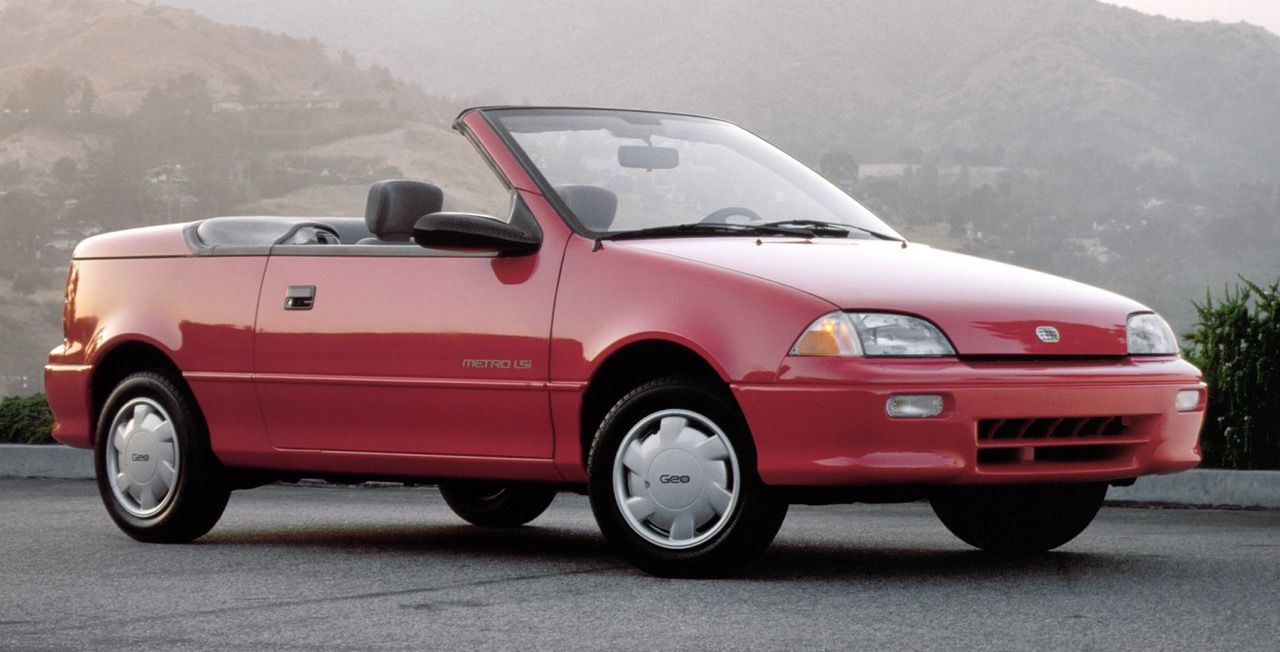
Convertibles are generally viewed as sporty cars with some pep under the hood, but that isn’t the case with the 1993 Geo Metro LSi. In fact, it’s the exact opposite, and that’s why it lands on this list of slowest cars. While the Geo Metro LSi had great potential in design, it was ultimately squandered with a rather pathetic engine.
Although it was marketed as a Geo, the Metro was actually produced by Suzuki. The model was available in convertible, hatchback, and sedan body styles. Of the three, the Metro LSi convertible was the quickest and an affordable choice for drivers who wanted a sporty style without the performance.
Under the hood sat a small 1.0-liter three-cylinder engine. It came mated to a five-speed manual transmission and front-wheel drive. That powertrain produced just 55 hp and 58 lb-ft of torque. That power, combined with a 1,753 lbs curb weight, resulted in a 13.8-second 0-to-60 mph time. Given its powertrain, it should come as no surprise that the Metro LSi offered a factory top speed of 94 mph and ran a quarter-mile in 19 seconds flat. As with most cars that lack respectable performance, especially for a convertible, the 1993 model earned great fuel economy, up to an EPA-estimated 46 city/49 highway MPG, putting it near the top of its class in terms of efficiency.
7 Slowest: 1992 Chevrolet Lumina

The 1992 Chevrolet Lumina wasn’t designed to be the quickest car of the year, but it certainly failed to meet expectations. The model was available in sedan and coupe body styles with a standard four-cylinder engine. Although a larger V6 engine was available, it cost a pretty penny more. As a result, Chevrolet Lumina models were powered by the four-cylinder.
As it turns out, the 2.5-liter four-cylinder wasn’t the best choice for such a hefty car. That engine came mated to a three-speed automatic transmission and front-wheel drive. When all was said and done, the 105 hp and the 135 lb-ft of torque were stuck hauling 3,220 lbs. of car.
Don’t get us wrong – the 1992 Chevrolet Lumina was good for families who simply needed to get from point A to B in no hurry at all. Even so, its 13.4-second 0-to-60 mph run was still like a slow walk rather than a leisurely jog.
A factory top speed of 112 mph and a quarter-mile time of 19.4 seconds round out the performance of the four-cylinder model. According to cars.com, models equipped with a V6 saw a four-speed automatic transmission and a total output of 140 hp. While a 1992 Lumina V6 was a little quicker, it still wasn’t anything to write home about.
6 Slowest: 1995 Honda Beat
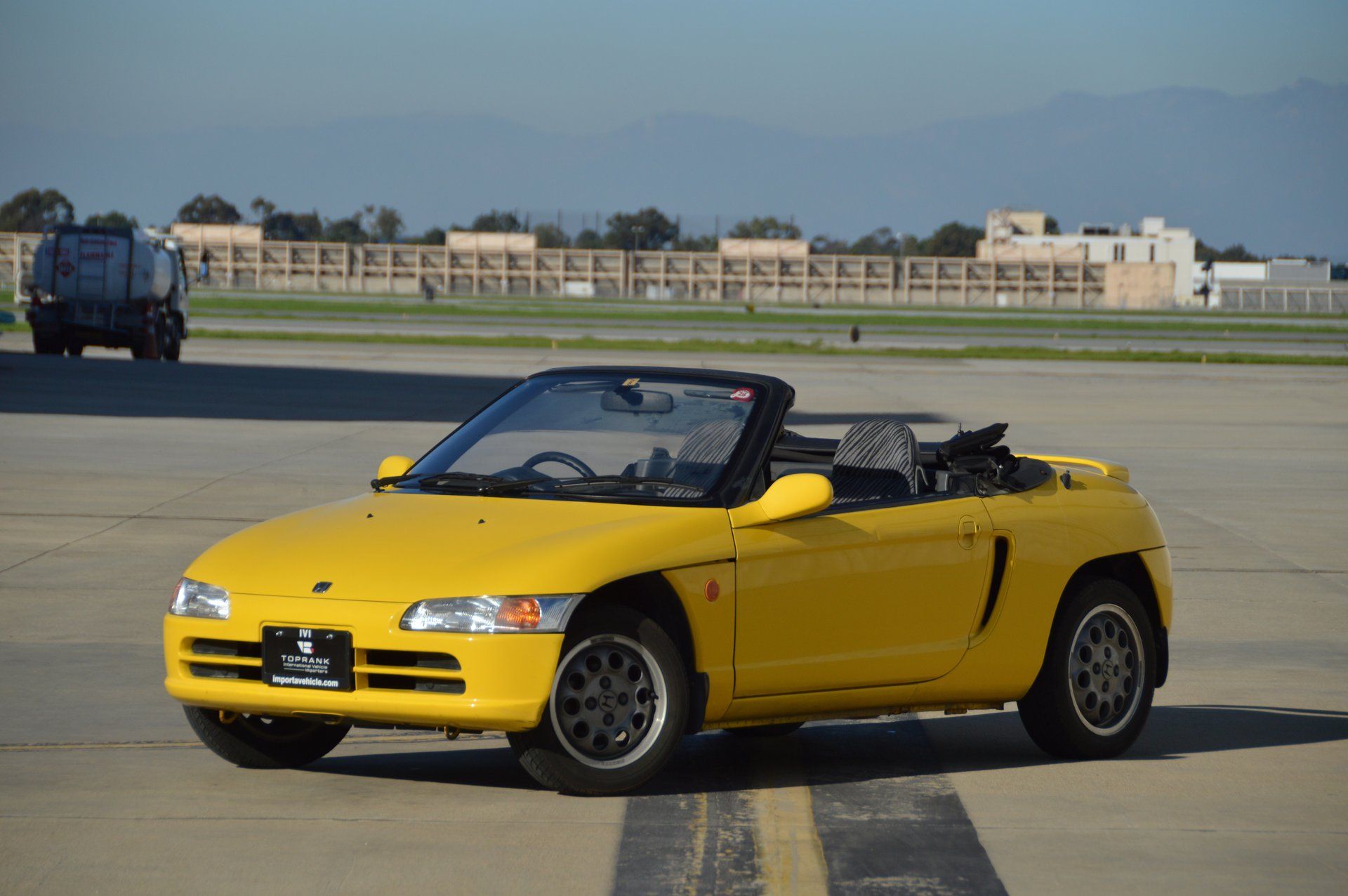
See, sometimes speed and fun have absolutely nothing to do with each other. The Honda Beat was a kei car manufactured in Japan; think of it as an even smaller, even less powerful Miata, or baby S2000 if you will. The Beat only weighed 1,675 lbs, so it really had no need for a large engine. And for that exact reason, Honda fitted the Beat with a minuscule 656cc three-cylinder engine (naturally-aspirated of course) which puffed out a tad more than 60 hp to the rear wheels. The Beat was a blast around corners, and you feel like you were driving a go-kart, but it was dreadfully slow. The Beat’s top speed was only 84 mph, and if you were lucky enough to hit 60 mph, it would take you around 13 seconds.
5 Slowest: 1996 Plymouth Breeze
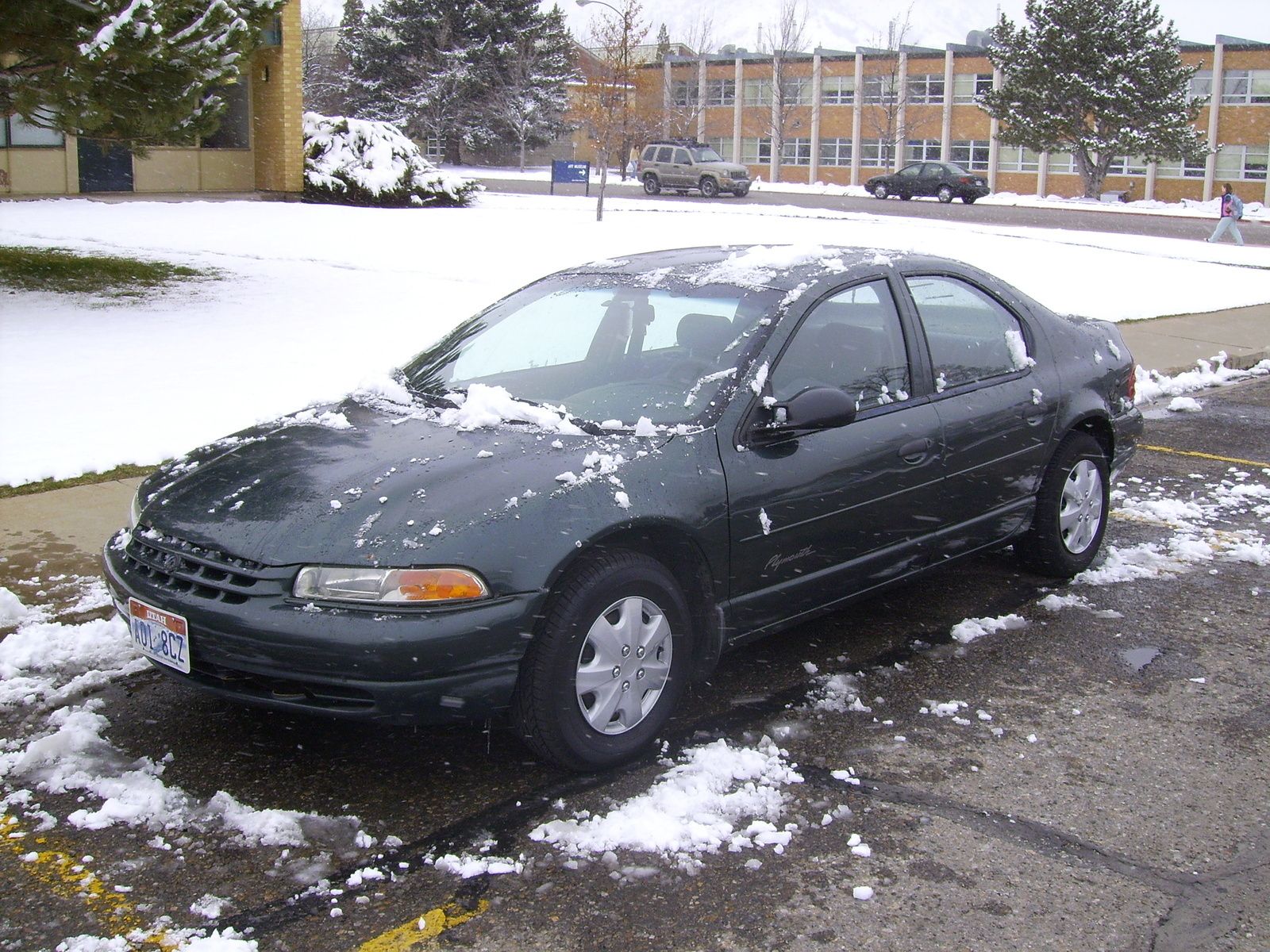
Plymouth isn’t an automotive marque most people thought much of in the 1990s, let alone today. Although the marque has long been gone, it still has a claim to fame for producing one of the slower cars of the decade. The 1996 Plymouth Breeze saw slow acceleration that didn’t do its name any favors.
Plymouth fell under the Chrysler umbrella and made its way to the market as a midsize family sedan. Featuring the rounded curves that were typical for ‘90s vehicles, the Plymouth Breeze certainly looked the part.
The family-sized model offered a 2.0-liter four-cylinder engine mated to a four-speed automatic transmission. Total performance output came to 132 hp and 129 lb-ft of torque, resulting in a 0-to-60 mph run of 12.5 seconds. While that certainly isn’t bad, it also isn’t on par with some competitors, like the Chevrolet Cavalier.
Midsize family sedans aren’t lightweights, but the Breeze fits the segment perfectly. Weighing in at 2,931 lbs., it’s clear this car wasn’t meant to burn rubber on a track.
The 1996 Plymouth Breeze was designed to appeal to drivers who wanted more standard features for a bargain price. In that sense, the Breeze succeeded spectacularly. The sedan featured class-leading interior space that was ideal for passengers of all shapes and sizes.
4 Slowest: 1993 Subaru Impreza LS AWD
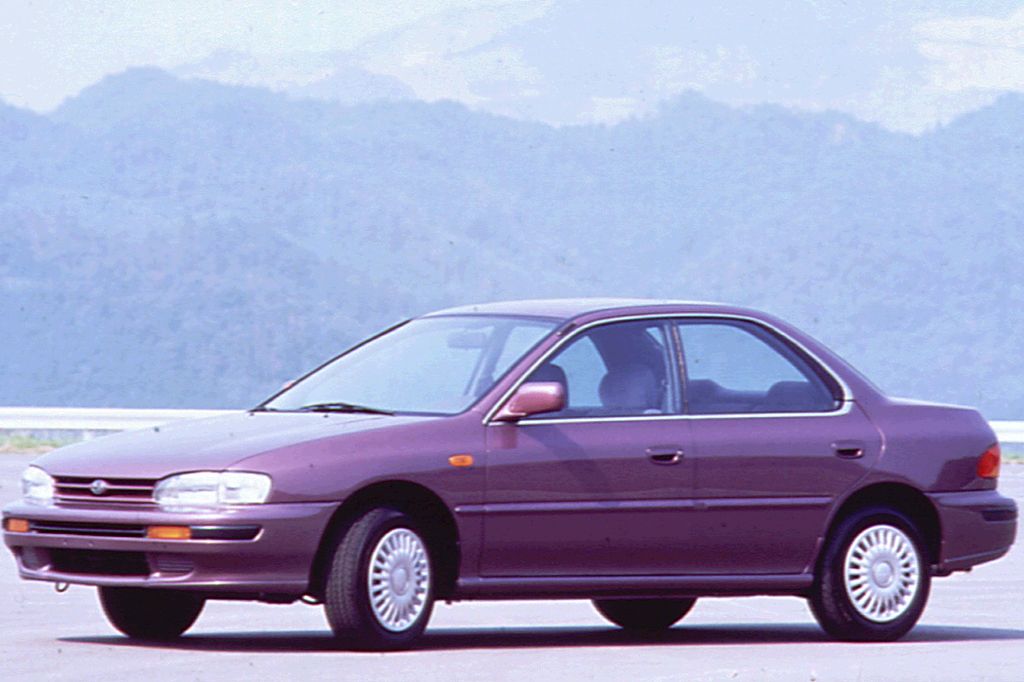
Subaru vehicles have a reputation for being, well… weird, for lack of a better term. Although they didn’t look like other cars, the marque certainly had its fans. Fortunately, the 1993 Subaru Impreza LS AWD did away with most of the weirdness and became a practical car.
The Subaru Impreza LS AWD effectively replaced the Loyale, one of the better-selling Subaru models in the United States. All-wheel-drive gave drivers who enjoyed dirt-road capability and control exactly what they wanted. Although it may have offered better handling than some competitors, it didn’t do the same when it came to acceleration.
The Impreza LS AWD entered the compact-car segment and instantly faced intense competition from the likes of the Honda Civic and Ford Escort. Unfortunately, its 1.8-liter flat four-cylinder engine and five-speed manual transmission didn’t quite cut it. Although that powertrain delivered a 1:1 ratio of 110 hp and 110 lb-ft of torque, it had a slow 0-to-60 mph time of 12.3 seconds.
According to Car and Driver, the Subaru Impreza LS AWD came with the boxer-type engine layout because it offered a better weight distribution and a lower hood line than a standard four-cylinder engine. It also came straight from the Legacy, resulting in savings on development, some of which were transferred to the consumer.
These Gorgeous ’90s Sports Cars Look Brand New
Read Next
About The Author
Marnus Moolman
(92 Articles Published)
Marnus Moolman is a young aspiring automotive writer from South Africa who is making a name for himself, despite his young age. Currently, he is studying to obtain a Bachelor’s Degree in Accounting to pursue his lifetime dream of running his own automotive detailing establishment.
More
From Marnus Moolman

